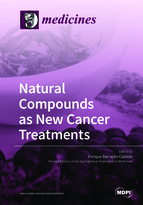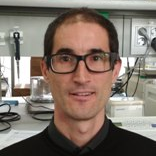Natural Compounds as New Cancer Treatments
A special issue of Medicines (ISSN 2305-6320). This special issue belongs to the section "Cancer Biology and Anticancer Therapeutics".
Deadline for manuscript submissions: closed (30 November 2018) | Viewed by 44849
Special Issue Editor
Interests: natural compounds; polyphenols; marine compounds; cancer; antimicrobial; skin; cosmetics
Special Issues, Collections and Topics in MDPI journals
Special Issue Information
Dear Colleagues,
Cancer is stil one of the main sanitary problems worlwide causing morbility and mortality. Although many pharmacological and clinical advances have been made, there is still a need for new molecules that improve the actual portfolio. Natural compounds from animal, microbial, vegetal, or fungi origin represent countless sources of new compunds that can be used as anticancer drugs if their activity, bioavailability and toxicity are adequate.
This Special Issue aims to compile both original articles and reviews, covering the most recent advances in the use of natural compounds for cancer treatment. Clinical trials and preclinical studies are also included in the scope. In vito studies will be welcome, only if molecular mechanisms are well defined and more than a single cell line is used. Studies using natural extracts, no matter their origin, must include a full chemical characterization using chromatographic or equivalent techniques.
Dr. Enrique Barrajón-Catalán
Guest Editor
Manuscript Submission Information
Manuscripts should be submitted online at www.mdpi.com by registering and logging in to this website. Once you are registered, click here to go to the submission form. Manuscripts can be submitted until the deadline. All submissions that pass pre-check are peer-reviewed. Accepted papers will be published continuously in the journal (as soon as accepted) and will be listed together on the special issue website. Research articles, review articles as well as short communications are invited. For planned papers, a title and short abstract (about 100 words) can be sent to the Editorial Office for announcement on this website.
Submitted manuscripts should not have been published previously, nor be under consideration for publication elsewhere (except conference proceedings papers). All manuscripts are thoroughly refereed through a single-blind peer-review process. A guide for authors and other relevant information for submission of manuscripts is available on the Instructions for Authors page. Medicines is an international peer-reviewed open access monthly journal published by MDPI.
Please visit the Instructions for Authors page before submitting a manuscript. The Article Processing Charge (APC) for publication in this open access journal is 1400 CHF (Swiss Francs). Submitted papers should be well formatted and use good English. Authors may use MDPI's English editing service prior to publication or during author revisions.
Keywords
- natural compound
- cancer
- new therapy
- clinical trial
- preclinical study





